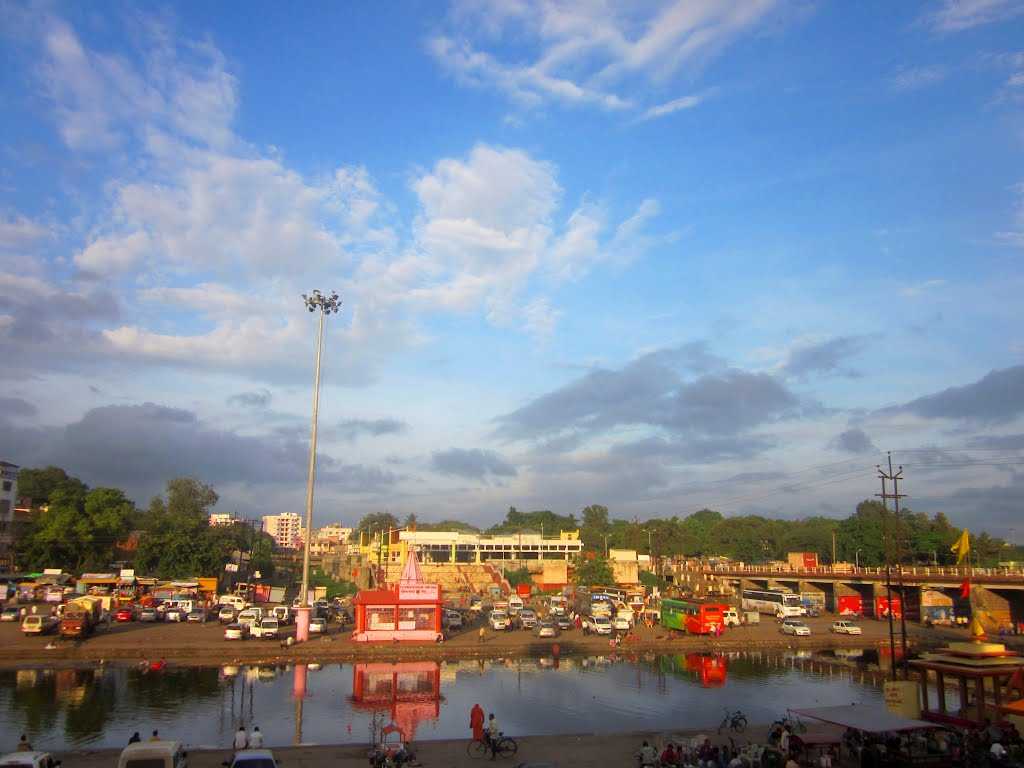Panchavati is a serene, spiritually rich area located in Nashik, Maharashtra, where myth, history, and spirituality converge. Known for its ancient temples, caves, and ghats, Panchavati is a popular pilgrimage destination, drawing visitors from across the world. Let’s dive deeper into what makes Panchavati a unique spot in Nashik.
2. Historical Background of Panchavati
The story of Panchavati goes back to the Ramayana, an ancient Indian epic. According to legend, Lord Rama, his wife Sita, and his brother Lakshmana spent a significant part of their exile in Panchavati. The area’s name, which means “five banyan trees,” symbolizes the five sacred banyans that once grew here. This association with the Ramayana has made Panchavati a place of great historical and religious significance.
3. Geographical Location
Panchavati is located in Nashik, in the western Indian state of Maharashtra. The town is around 165 kilometers from Mumbai, making it easily accessible by road and rail. Visitors can take a bus, train, or even a flight to Nashik and then travel by auto or taxi to reach Panchavati.
4. The Religious Importance of Panchavati
Panchavati holds immense religious significance as it is deeply associated with the Ramayana. Pilgrims visit Panchavati to experience the places where Lord Rama, Sita, and Lakshmana are believed to have lived. Many sites here offer a tangible connection to ancient legends, attracting both believers and history enthusiasts.
5. Panchavati's Key Attractions
5.1 Kalaram Temple
The Kalaram Temple, dedicated to Lord Rama, is one of the most prominent temples in Panchavati. Built in black stone, the temple is a masterpiece of architecture, with its intricate carvings and towering structure. It’s believed that the idol of Lord Rama housed here is black, which gives the temple its name, "Kalaram" (Kala means black in Hindi).
5.2 Sita Gufa (Sita Cave)
The Sita Gufa, or Sita Cave, is an intriguing site in Panchavati. Legend says that Sita took refuge in this cave when Ravana, the demon king, abducted her. The cave is narrow and dark, providing an immersive experience for those exploring it.
5.3 Ramkund
Ramkund is a sacred tank on the banks of the Godavari River. It is said that Lord Rama used to bathe here, and pilgrims follow in his footsteps to take a holy dip. Many believe that this ritual washes away sins, making Ramkund a central part of the Panchavati pilgrimage.
5.4 Panchavati Ghat
Panchavati Ghat is a vibrant area along the river, where locals and pilgrims perform rituals, prayers, and aartis. The peaceful ambiance and the presence of devotees create a spiritual atmosphere, especially at sunrise and sunset.
5.5 Naroshankar Temple
Dedicated to Lord Shiva, the Naroshankar Temple is another architectural gem in Panchavati. Known for its stunning architecture and historical significance, it stands as a testament to Nashik's cultural richness and devotion.
6. Panchavati’s Role in the Kumbh Mela
Panchavati is an essential stop for pilgrims during the Kumbh Mela, a grand religious festival held every 12 years in Nashik. During this time, millions gather here to take part in holy rituals, with Panchavati serving as a focal point of the event.
7. Panchavati’s Scenic Landscape
Nestled by the Godavari River, Panchavati boasts a scenic landscape with lush greenery and a serene ambiance. The blend of natural beauty and spiritual energy makes it a refreshing destination for visitors. Early winter and spring are ideal times to experience Panchavati’s beauty at its best.
8. How to Explore Panchavati
For a fulfilling experience, visitors can start their day with a visit to the Kalaram Temple, followed by exploring the Sita Gufa and Ramkund. It’s recommended to keep a flexible schedule and take breaks to absorb the spiritual atmosphere of Panchavati.
9. Cultural Impact of Panchavati on Nashik
Panchavati has greatly influenced Nashik’s cultural identity. Its temples, rituals, and spiritual practices have permeated local festivals, art, and literature, creating a unique blend of tradition and devotion.
10. Accommodation and Dining Options near Panchavati
Nashik offers a range of accommodations for visitors, from budget lodges to luxury hotels. For dining, visitors can enjoy traditional Maharashtrian dishes such as Misal Pav, Vada Pav, and Puran Poli at local eateries.
11. Panchavati in Popular Culture
Panchavati has made its way into various works of literature and films, often depicted as a place of spiritual refuge. Its mythological significance keeps it alive in cultural expressions across media.
12. Travel Tips for Visiting Panchavati
Visitors should plan to dress modestly, carry sunscreen, and wear comfortable shoes for exploring the ghats and temples. Early mornings or evenings are ideal for a calm experience at the temples.
13. Local Markets near Panchavati
The local markets around Panchavati are filled with religious artifacts, souvenirs, and traditional crafts. These markets are great places to pick up mementos from your trip.
14. Panchavati Beyond Religion
While Panchavati is primarily known for its religious appeal, it also offers scenic views and a peaceful environment. It’s a fantastic destination for photographers, nature lovers, and anyone looking for a tranquil escape.
15. Conclusion
Panchavati is a gem within Nashik, offering a journey through time, faith, and culture. Whether you’re a pilgrim, a history buff, or simply a curious traveler, Panchavati promises an unforgettable experience with its unique blend of spiritual energy and natural beauty.
FAQs
1. What is the best time to visit Panchavati?
The best time to visit is between October and February when the weather is pleasant.
2. Are there any entry fees for temples in Panchavati?
Most temples are free to enter, though donations are encouraged.
3. What should visitors wear when visiting Panchavati?
It’s recommended to wear modest clothing, especially in temples and religious sites.
4. Is Panchavati suitable for non-religious tourists?
Absolutely! Its historical sites, natural beauty, and peaceful ambiance make it a great spot for all visitors.






Comments